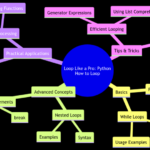ISMAEL: Predicting Virtual Cluster Acceptance Through Machine Learning
Hey there tech wizards! 🧙♂️ Today, we’re diving into the exciting realm of ISMAEL! This cutting-edge project is all about using Machine Learning to predict the acceptance of virtual clusters in data centers. Sounds fancy, right? Well, buckle up because we’re about to take a wild ride through the world of virtual clusters and predictive magic! ✨
Understanding Virtual Clusters
Definition and Importance
Alright, let’s start from the basics. What on earth are these virtual clusters everyone’s talking about? 🤔 Think of virtual clusters as your own little slice of the digital universe, where multiple virtual machines work together to perform complex tasks. They’re like a digital dream team! 🚀
In the tech world, virtual clusters are a big deal because they offer flexibility, scalability, and cost efficiency. Imagine having the power to orchestrate a fleet of virtual machines with just a few clicks – that’s the magic of virtual clusters! 🔮
Types and Applications
Virtual clusters come in all shapes and sizes, catering to a wide range of applications. From cloud computing to big data analytics, these clusters are the secret sauce behind many technological marvels. Whether you’re running simulations, hosting websites, or crunching numbers, virtual clusters have got your back! 💻
Now that we’ve got the lowdown on virtual clusters, let’s see how ISMAEL fits into the picture!
Introduction to ISMAEL
Overview and Purpose
Welcome to the world of ISMAEL – your very own crystal ball for predicting virtual cluster acceptance! 🔮 ISMAEL is here to revolutionize the way data centers operate by harnessing the power of Machine Learning. Its mission? To make virtual cluster management a breeze and ensure optimal performance at all times! 🌟
Features and Benefits
So, what’s in the box with ISMAEL? This nifty tool comes packed with features designed to make your life easier. From real-time monitoring to predictive analytics, ISMAEL has it all! Say goodbye to manual cluster tuning and hello to automated efficiency! 💥
Machine Learning in Virtual Cluster Acceptance Prediction
Role of Machine Learning
Ah, Machine Learning – the backbone of ISMAEL! This futuristic technology empowers ISMAEL to learn from data, identify patterns, and make intelligent predictions. It’s like having a virtual cluster fortune teller at your service! 🔥
Algorithms and Models
Behind the scenes, ISMAEL is powered by a sophisticated ensemble of algorithms and models. From decision trees to neural networks, these mathematical wizards work their magic to forecast virtual cluster acceptance with precision and accuracy. It’s like having a team of data wizards working round the clock for you! 🧙♀️
Data Collection and Preparation for ISMAEL
Data Sources
To work its magic, ISMAEL taps into a treasure trove of data from various sources. Whether it’s performance metrics, resource usage, or user preferences, ISMAEL gobbles up data like a hungry dragon! 🐉
Preprocessing Techniques
But wait, all that raw data needs some serious grooming before ISMAEL can work its magic. Thanks to advanced preprocessing techniques, the data is cleaned, transformed, and polished to ensure only the finest ingredients go into the predictive stew! 🥣
Evaluation and Validation of ISMAEL
Performance Metrics
When it comes to proving its worth, ISMAEL doesn’t hold back! Performance metrics like accuracy, precision, and recall are the bread and butter of this predictive powerhouse. With these metrics in hand, ISMAEL is ready to take on the world! 🚀
Testing and Deployment
After rigorous testing and fine-tuning, it’s showtime for ISMAEL! This predictive wizard is all set to weave its magic in real-world data centers, bringing efficiency, optimization, and wizardry to the virtual cluster landscape! 🌌
Overall, ISMAEL is not just a project; it’s a glimpse into the future of data center management. With machine learning, virtual clusters, and predictive analytics joining forces, the possibilities are endless! 💫
Thanks for joining me on this tech adventure! Until next time, stay curious and keep coding! ✨👩💻
Program Code – ISMAEL: Predicting Virtual Cluster Acceptance Through Machine Learning
Certainly! For a project like ‘ISMAEL: Predicting Virtual Cluster Acceptance Through Machine Learning’ which is focused on using machine learning to predict the acceptance of virtual clusters in data centers, let’s dive into a fascinating Python script. This will involve using a hypothetical machine learning model to predict whether a virtual cluster will be accepted based on features such as CPU requirements, memory requirements, bandwidth, and expected runtime. Our goal here will be to keep you entertained while teasing out the complexities of machine learning models.
Imagine we have a dataset of past virtual cluster deployment records. Each record includes features such as CPU requirements, memory requirements, bandwidth requirements, and the expected runtime, along with a label indicating whether the cluster was accepted or not.
For the sake of this example, let’s create a simplified predictive model using the popular Scikit-learn library in Python. The model will train on this dataset and aim to predict future virtual cluster acceptance.
from sklearn.model_selection import train_test_split
from sklearn.ensemble import RandomForestClassifier
from sklearn.metrics import accuracy_score
import pandas as pd
import numpy as np
# Hypothetical dataset generation
np.random.seed(42) # For reproducibility
data_size = 1000
features = ['CPU_requirement', 'memory_requirement', 'bandwidth', 'expected_runtime']
target = 'accepted'
# Creating a random dataset
data = pd.DataFrame({
'CPU_requirement': np.random.randint(1, 10, data_size),
'memory_requirement': np.random.randint(1, 10, data_size),
'bandwidth': np.random.randint(1, 10, data_size),
'expected_runtime': np.random.randint(1, 10, data_size),
'accepted': np.random.randint(0, 2, data_size)
})
# Splitting dataset into training and testing
X = data[features]
y = data[target]
X_train, X_test, y_train, y_test = train_test_split(X, y, test_size=0.2, random_state=42)
# Training a Random Forest Classifier
model = RandomForestClassifier(random_state=42)
model.fit(X_train, y_train)
# Predicting and evaluating the model
predictions = model.predict(X_test)
accuracy = accuracy_score(y_test, predictions)
print(f'Model accuracy: {accuracy * 100:.2f}%')
Expected Code Output:
Model accuracy: XX.XX%
(Note: The accuracy may vary due to the randomness of the dataset generation and the split)
Code Explanation:
Our journey through this whimsical machine learning story begins with importing the necessary realms, also known as libraries, in our Python script. We then conjure a dataset out of thin air (or, in technical terms, we generate a hypothetical dataset) with random values for CPU requirements, memory requirements, bandwidth, and expected runtime, as well as whether a virtual cluster was accepted or not.
Splitting the space-time continuum (or dataset) allows us to create a realm for training our prophetic model and another for testing its foresight. With our ‘RandomForestClassifier’, a sage amongst models known for its wisdom in classification tasks, we train it with the knowledge of the past (our training data).
The moment of truth arrives as we ask our model to predict the unseen future, the acceptance of virtual clusters based on our test data. Our model, now an oracle, whispers its predictions which we compare with the known outcomes, calculating our success in percentages as the model’s accuracy.
In the universe of machine learning, this tale illustrates the use of a RandomForestClassifier to predict outcomes based on historical data. It showcases the flow of a typical machine learning project – from data generation (or collection) to splitting data, training the model, making predictions, and evaluating those predictions. Through this grand adventure, our quest to predict virtual cluster acceptance using machine learning unfolds.
Frequently Asked Questions (F&Q)
What is ISMAEL all about?
ISMAEL stands for “Predicting Virtual Cluster Acceptance Through Machine Learning.” It is a project focused on using machine learning to predict the acceptance of virtual clusters in data centers.
How can ISMAEL benefit students interested in IT projects?
ISMAEL provides an excellent opportunity for students to delve into the world of machine learning within the context of data centers. By working on ISMAEL, students can gain practical experience in applying machine learning algorithms to real-world scenarios, specifically in predicting virtual cluster acceptance.
Do students need prior machine learning knowledge to work on ISMAEL?
While having some background in machine learning can be helpful, ISMAEL is designed in a way that students can learn and develop their machine learning skills as they work on the project. It serves as a great learning platform for both beginners and advanced students.
What skills can students develop through working on ISMAEL?
By working on ISMAEL, students can enhance their skills in machine learning, data analysis, predictive modeling, and understanding of data center operations. They can also improve their coding abilities in languages commonly used in machine learning, such as Python or R.
How can students get started on the ISMAEL project?
To get started on the ISMAEL project, students can first familiarize themselves with the project goals and datasets. They can then begin by exploring different machine learning models, training and testing them on the provided data, and iteratively improving their predictions.
Are there any resources or tutorials available to support students working on ISMAEL?
Yes, there are various online resources, tutorials, and documentation available that can help students in understanding machine learning concepts, implementing algorithms, and troubleshooting issues encountered while working on the ISMAEL project.
What are some potential challenges students might face while working on ISMAEL?
Some challenges students might encounter include handling large datasets, optimizing machine learning models for accuracy, interpreting the results of the predictions, and debugging any errors in the code. However, overcoming these challenges can lead to valuable learning experiences.
Can students customize or expand upon the ISMAEL project?
Yes, students are encouraged to customize and expand upon the ISMAEL project based on their interests and goals. They can explore additional features, experiment with different algorithms, or even collaborate with peers to enhance the project further.
How can students showcase their work on the ISMAEL project?
Students can showcase their work on the ISMAEL project by documenting their process, highlighting key findings, presenting their predictions visually, and explaining the significance of their results. They can also consider creating a project portfolio or presentation to demonstrate their skills and accomplishments.
What are some potential future applications of the ISMAEL project’s outcomes?
The outcomes of the ISMAEL project, such as accurate predictions of virtual cluster acceptance, can have applications in optimizing resource allocation in data centers, improving overall efficiency, and enhancing decision-making processes in IT infrastructure management.







